10 Plants That Repel Flies (with Pictures)
-
Pete Ortiz
- Last updated:
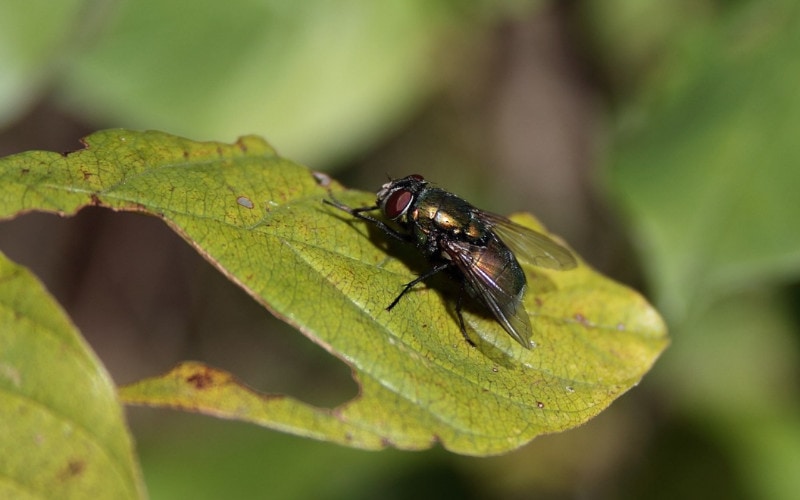
Enjoying the weather outside makes for a great time, except if you’re surrounded by flies everywhere you turn. Flies are super annoying and can also spread disease. However, you don’t have to rush out for insect repellent to keep these winged buggers at bay. Instead, try incorporating fly-repellent plants into your backyard or garden.
Planting fly-repellent plants in your garden is one of the best ways to get rid of pesky flies. That way, you can enjoy the outside breeze peacefully on your patio or backyard. Our top picks for fly-repellent flies include.
The 10 Plants That Repel Flies
1. Petunias

| Native Region: | South America |
| USDA Growing Zone: | 10 and 11 |
| Height: | 6 to 18 inches |
| Sun Exposure: | 5 to 6 hours |
Petunias have a strong scent that repels not only flies but also other insects like aphids and tomato worms. Aside from keeping the bugs away from your yard, petunias are also lovely to look at and come in a variety of colors. We recommend planting these pretty petunias in hanging baskets or along the borders of your garden.
2. Lavender
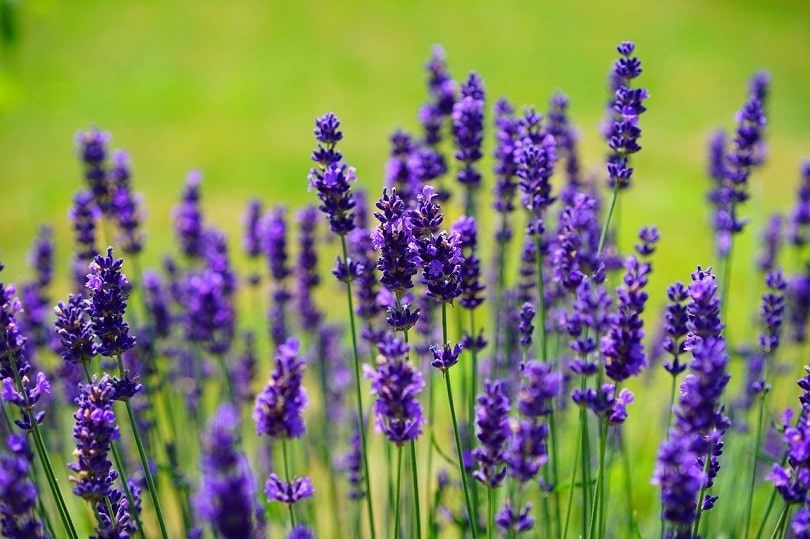
| Native Region: | Mediterranean |
| USDA Growing Zone: | 5 to 9 |
| Height: | 2 to 3 feet |
| Sun Exposure: | 6 hours |
Not only does lavender have a beautiful and calming scent, but it’s also very effective in repelling flies. Planting lavender around your outdoor seating areas will keep the flies away while also creating a peaceful atmosphere. In addition, lavender can also repel moths, mosquitoes, and even rabbits in your garden.
3. Marigolds
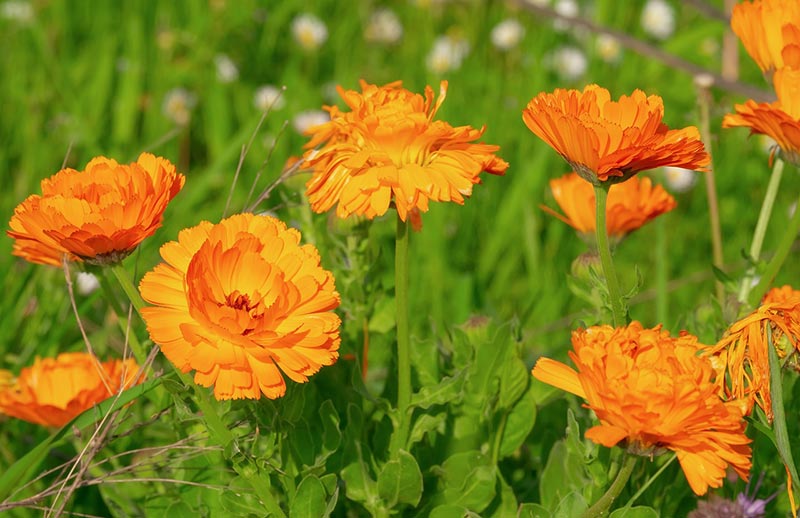
| Native Region: | Mexico |
| USDA Growing Zone: | 2 to 11 |
| Height: | 6 to 24 inches |
| Sun Exposure: | 6 hours |
Marigolds are another fly-repellent plant that adds a pop of color to any outdoor space. Their double-flowered head in striking yellow and orange will easily make them a highlight in your home garden. Aside from repelling flies, marigolds also repel mosquitoes and even deer. We recommend planting these vibrant flowers along the edges of your garden or in containers on your patio.
4. Lemon Balm

| Native Region: | Southern Europe and Northern Africa |
| USDA Growing Zone: | 3 to 7 |
| Height: | 2 to 3 feet |
| Sun Exposure: | 5 to 6 hours |
Lemon balm has a citrusy scent that repels flies and other insects. It’s also used in herbal medicine for its calming properties and is often added to teas or salads. The leaves can also be crushed and used as a fly repellent around your outdoor dining area. You can grow them in containers or incorporate them into your herb garden.
5. Citronella Grass
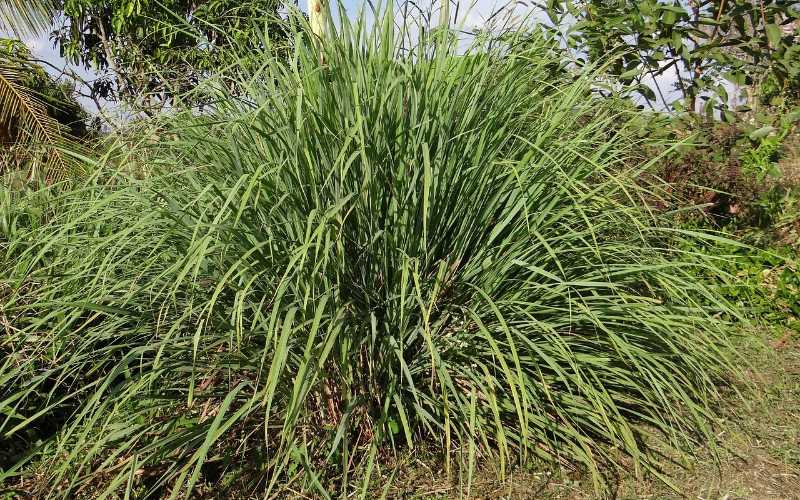
| Native Region: | Southeast Asia |
| USDA Growing Zone: | 10 to 12 |
| Height: | 5 to 6 feet |
| Sun Exposure: | 6 to 8 hours |
You may have heard of citronella as an ingredient in insect repellent, but did you know that citronella grass is also fly-repellent? Citronella grass can grow tall and adds a tropical vibe to your garden. Plus, you can use the leaves for DIY fly repellent or add them to your summer cocktails for a refreshing citrus kick.
6. Floss Flowers

| Native Region: | Mexico and South America |
| USDA Growing Zone: | 10 to 11 |
| Height: | 4 to 36 inches |
| Sun Exposure: | 4 to 6 hours |
Floss flowers may be small, but their fly-repelling properties pack a huge punch. These pretty flowers bloom in shades of pink and purple, making them a great addition to flower beds or containers. What’s more, these adorable flowers also repel deer, rabbits, and other garden pests.
7. Nasturtiums
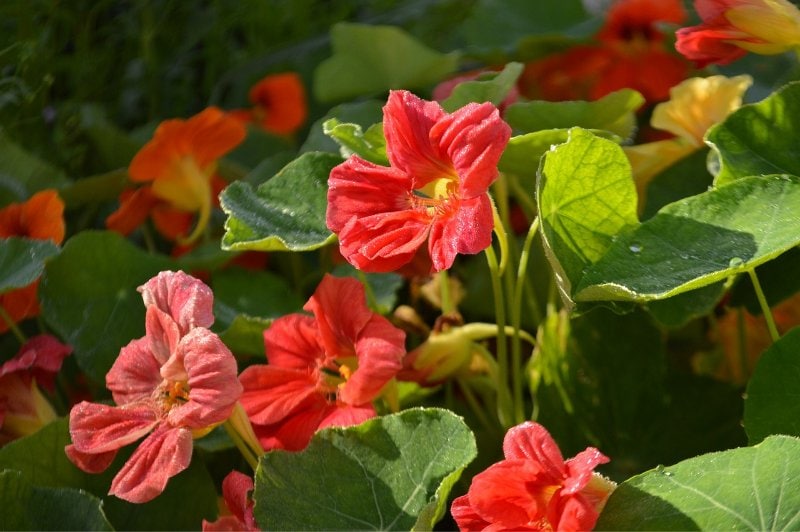
| Native Region: | South and Central America |
| USDA Growing Zone: | 2 to 11 |
| Height: | 12 to 18 inches |
| Sun Exposure: | 6 to 8 hours |
Nasturtiums aren’t just fly-repellent; they also have edible leaves and flowers. These vibrant plants come in shades of red, orange, yellow, and even cream, making them a beautiful addition to any garden. Plus, they attract beneficial insects like ladybugs while deterring pests like aphids and squash bugs. Plant them along the borders of your garden or in containers on your patio for fly-free outdoor enjoyment.
8. Lemon Thyme
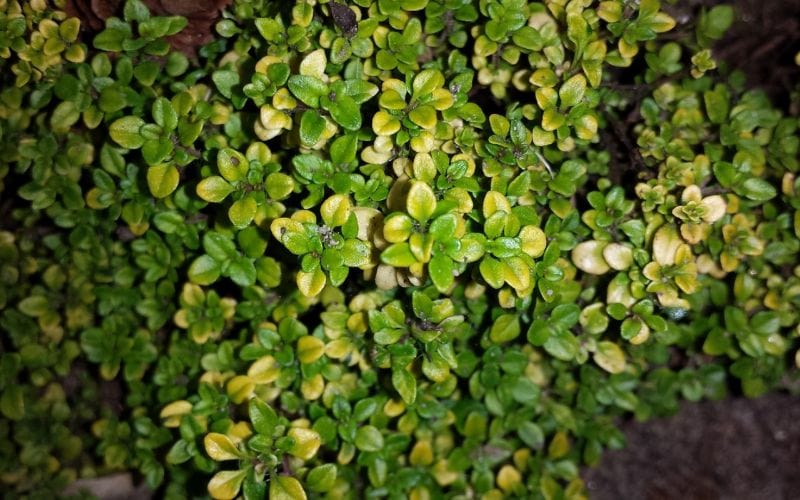
| Native Region: | Mediterranean |
| USDA Growing Zone: | 5 to 9 |
| Height: | 6 inches |
| Sun Exposure: | 6 hours |
Not only does lemon thyme add a citrusy flavor to your dishes, but it also repels flies and other insects. The leaves can also be crushed and used as a fly repellent around outdoor seating areas. Plus, it’s a low-maintenance herb that can thrive in containers or as part of your herb garden.
9. Rosemary
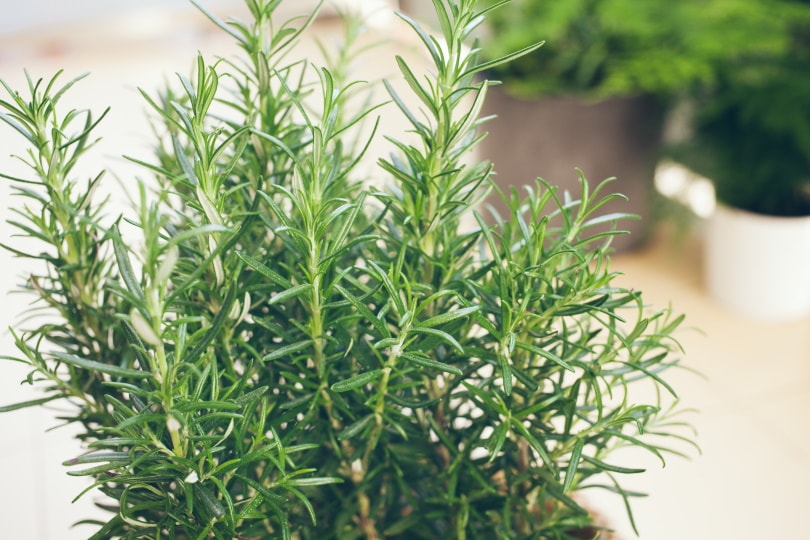
| Native Region: | Mediterranean |
| USDA Growing Zone: | 8 to 10 |
| Height: | 3 feet |
| Sun Exposure: | 6 to 8 hours |
Rosemary not only adds a delicious flavor to your cooking, but it also repels flies and other insects. Plus, its woody scent can bring a calming atmosphere to your outdoor space. Plant it along the edges of your garden or in a container on your patio for fly-free enjoyment.
10. Sage

| Native Region: | Mediterranean |
| USDA Growing Zone: | 5 to 9 |
| Height: | 1 to 2 feet |
| Sun Exposure: | 6 to 8 hours |
Another plant that repels flies that you can also use for cooking is sage. It is an excellent fly and insect repellent. It’s a low-maintenance herb that can thrive in containers or as part of your herb garden. Plus, its woody scent brings a calming atmosphere to your outdoor space.
Keep the Flies Away With the Right Plants
Adding fly-repellent plants to your garden is a natural way to keep pesky flies away while also adding beauty to your outdoor space. So say goodbye to fly swatters and hello to these fly-repelling plants. Just remember to crush or bruise the leaves once in a while to release their fly-repelling oils for maximum effectiveness. Happy gardening!
Featured Image Credit: Siegella, Pixabay
Contents


